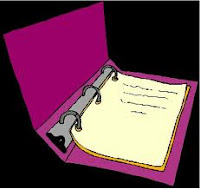 I recently finished TENDING TO GRACE, by Kimberly Newton Fusco. Here's a brief summary from Amazon:
I recently finished TENDING TO GRACE, by Kimberly Newton Fusco. Here's a brief summary from Amazon: Lenore is Cornelia's mother--and Cornelia's fix-up project. What does it matter that Cornelia won't talk to anyone and is always stuck in the easiest English class at school, even though she's read more books than anyone else? She feels strong in the fixing. She cooks vegetable soup so Lenore will eat something other than Ring Dings; she lures her out of bed with strong coffee and waffles. She looks after the house when Lenore won't get out of bed at all.
So when Lenore and her boyfriend take off for Vegas leaving Cornelia behind with eccentric Aunt Agatha, all Cornelia can do is wait for her to come back. Aunt Agatha sure doesn't want any fixing.
Here are some writing lessons I learned from this poignant book:
- Create a sympathetic narrator. I know, I know. Obvious, right? But it bears repeating. Cornelia has a speech impediment, and right away the reader feels her shame. She's smart, but only the reader knows that, and we root for her from page one.
- Create a quirky sidekick. In some scenes Aunt Agatha could be labeled the opposition. Her goals conflict with Cornelia's goals, but she does it with flair and good humor. She wears a giant purple hat and moccasins, no matter what the season. She eats fiddleheads, munches on sugar cubes, and drinks sassafras. You can't help but love her, even when she's not being nice to Cornelia.
- Bind the two main characters together. Cornelia's mom has dumped her off with Aunt Agatha, and she has no choice but to live in a dusty old house with no bathroom. She struggles to speak, but is an avid reader. Aunt Agatha is strong-willed, but illiterate. They're bound together by circumstances, yet they find a way to help each other.
- Postcards can add backstory. Cornelia's mom sends postcards from Vegas. Even though her messages are short, the reader understands that mom is a flake, she makes terrible choices, and Cornelia pays the cost.
- Less = More. With her sparse style, the author created chapters that were sometimes only half a page long. One and a half pages at the most. But each small chapter is packed with voice and character. It made me wonder how much fluff was left on the cutting room floor.
Have you read this book? And what's a writing lesson you recently learned from a great book?







